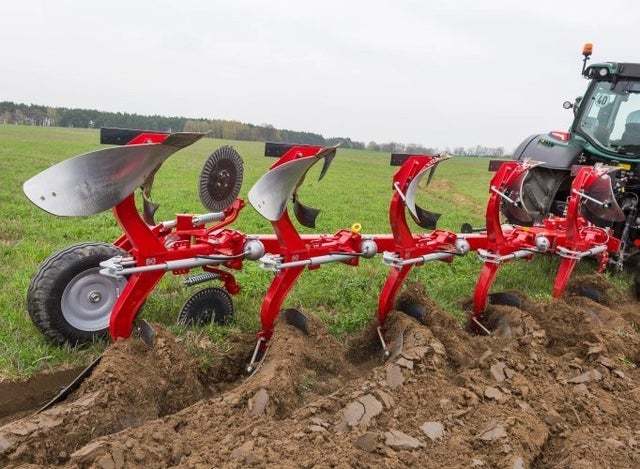A plough or plow is a farm tool for loosening or turning the soil before sowing seed or planting. Ploughs were traditionally drawn by oxen and horses, but in modern farms are drawn by tractors. A plough may have a wooden, iron or steel frame, with a blade attached to cut and loosen the soil. It has been fundamental to farming for most of history. The earliest ploughs had no wheels, such a plough being known to the Romans as an aratrum. Celtic peoples first came to use wheeled ploughs in the Roman era.
The prime purpose of ploughing is to turn over the uppermost soil, so bringing fresh nutrients to the surface, while burying weeds and crop remains to decay. Trenches cut by the plough are called furrows. In modern use, a ploughed field is normally left to dry and then harrowed before planting. Ploughing and cultivating soil evens the content of the upper 12 to 25 centimetres layer of soil, where most plant-feeder roots grow.
Ploughs were initially powered by humans, but the use of farm animals was considerably more efficient. The earliest beasts used were oxen. Later horses and mules were used in many areas. With the industrial revolution came the possibility of steam engines to pull ploughs. These in turn were superseded by internal-combustion-powered tractors in the early 20th century.

